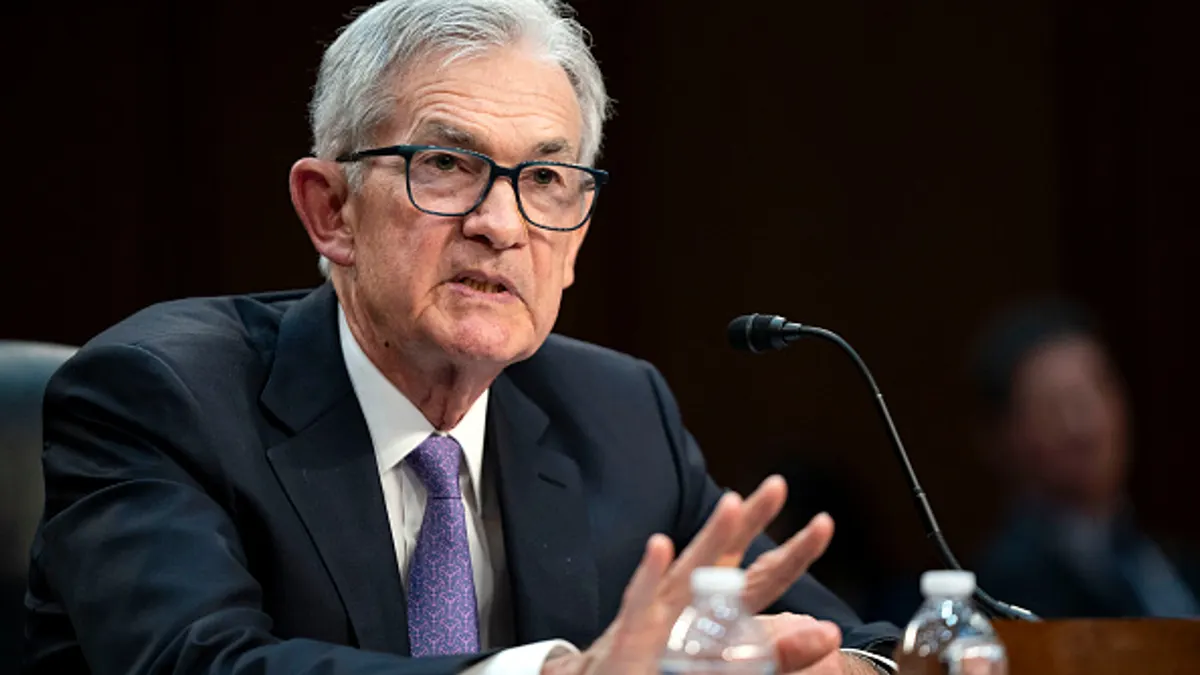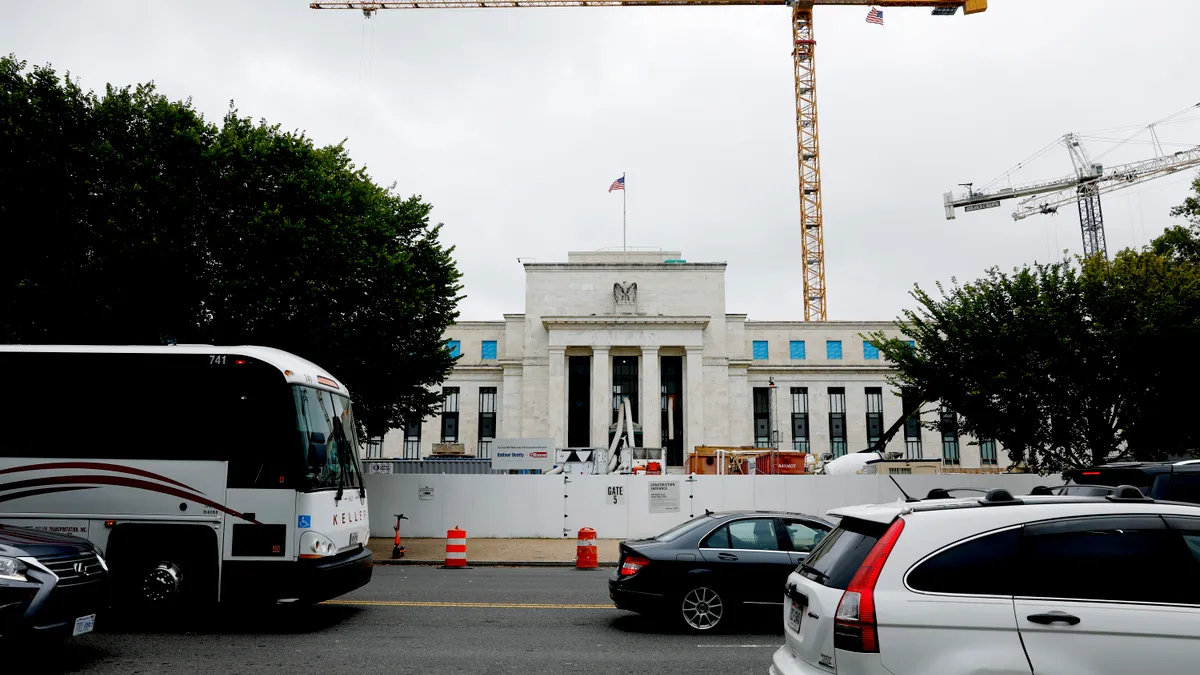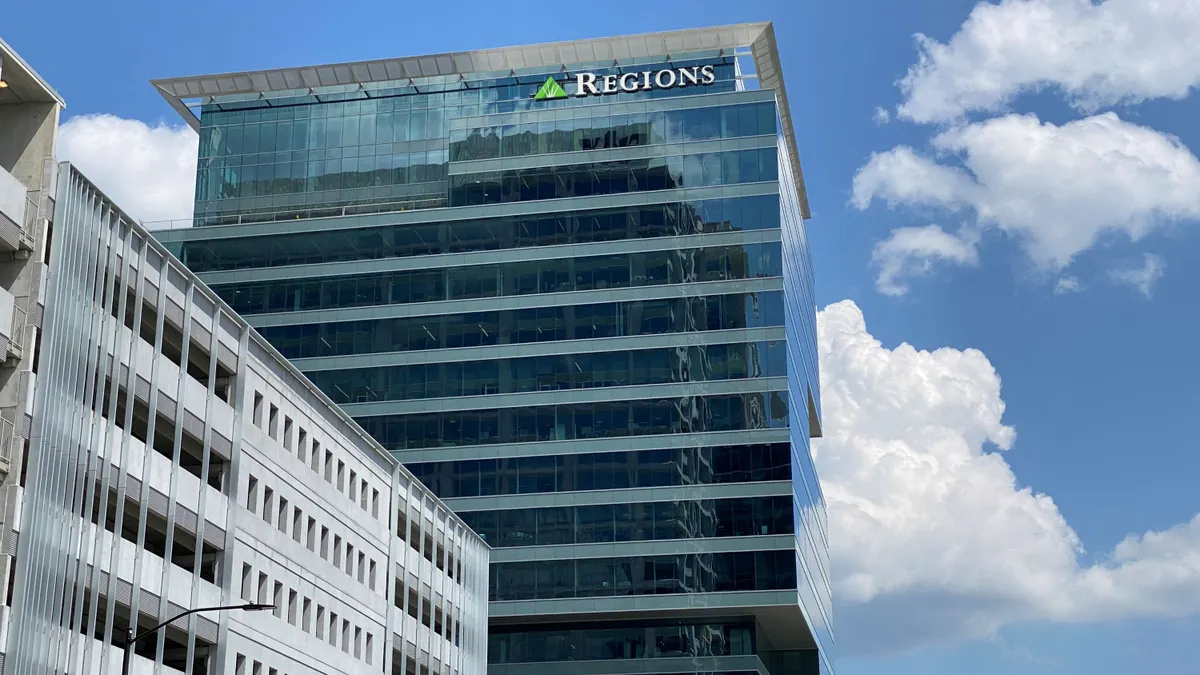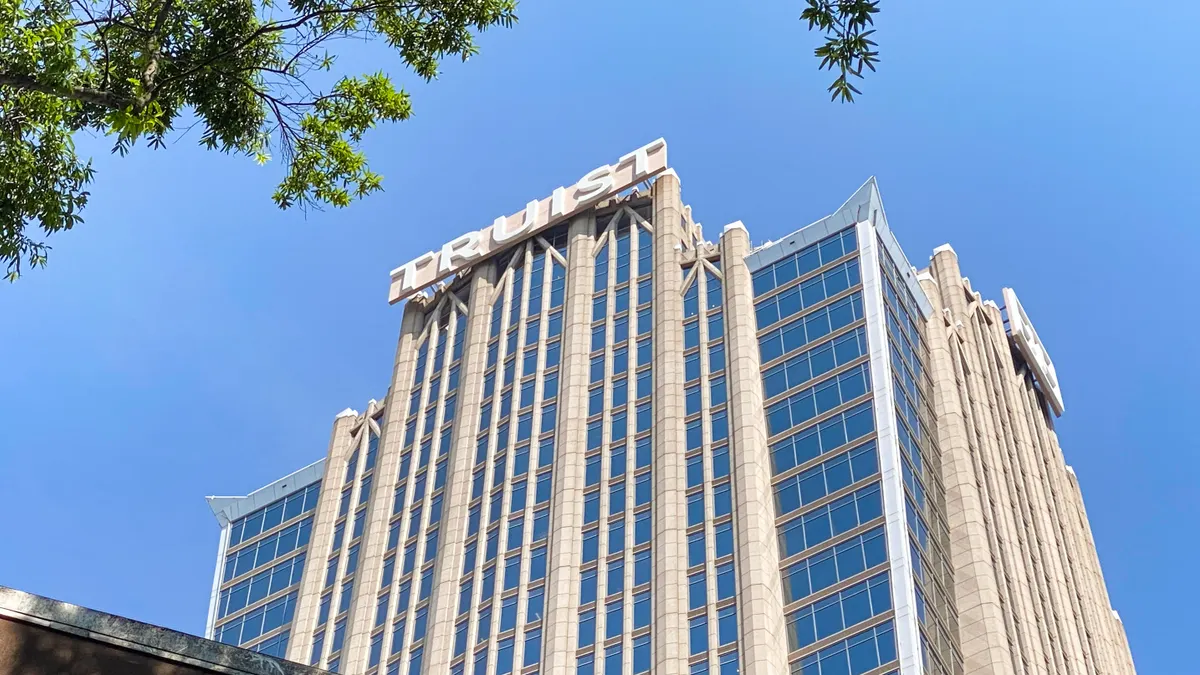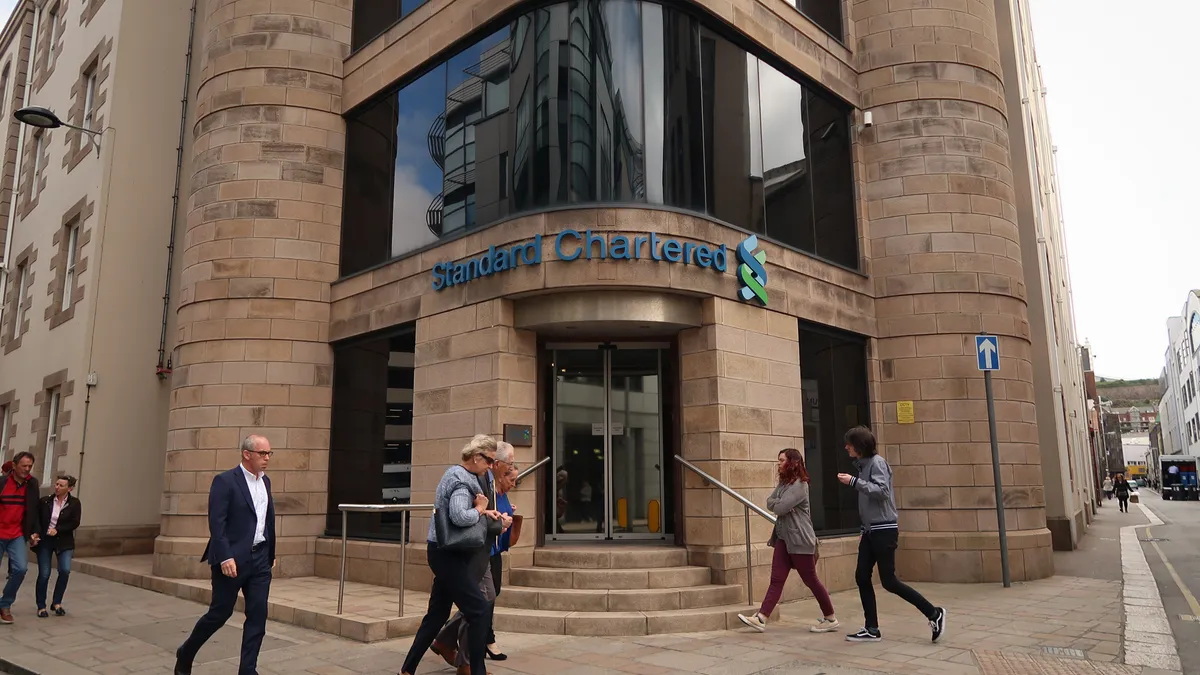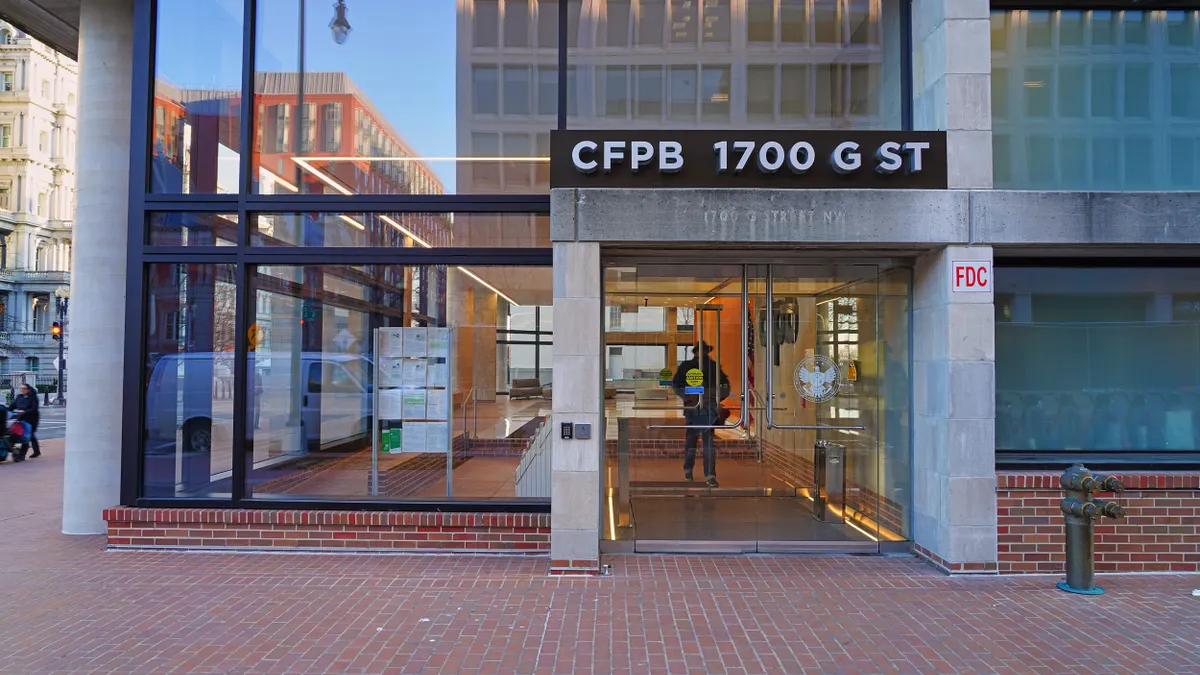Federal Reserve Chair Jerome Powell responded personally Thursday to a letter from Office of Management and Budget Director Russ Vought, who accused the central bank chief last week of “grossly mismanag[ing] the Fed,” particularly calling out a still-unfinished renovation of two Fed office spaces in Washington, D.C., that has gone over budget.
“The project is large in scope because it involves the renovation of two historic buildings on the National Mall and that were first constructed in the 1930s,” Powell wrote Thursday. “While periodic work has been done to keep these buildings occupiable, neither building has seen a comprehensive renovation since they were first constructed.”
Much of Powell’s letter reiterates points outlined in a document the Fed posted July 11 in the “frequently asked questions” portion of its website.
But some members of President Donald Trump’s administration have begun using the $2.5 billion renovation as a proxy for Powell’s fitness to serve – specifically, his resistance to pressure from the president to lower interest rates.
Vought, at a breakfast briefing Thursday, called the renovation – initially slated to cost $1.9 billion – “an outrageous cost overrun.”
Trump “is a builder,” Vought said, citing the president’s past as a real estate developer, and, as such, is “offended” by the scale of the renovation, the Financial Times reported.
The renovation came to widespread public consciousness last month, when Powell, testifying in response to questions from six Republican senators, shot down reports that the project included a VIP dining room, special elevators and ornate water features.
The Fed, in its FAQ document, clarified its use of marble in the project, and addressed the proposed “terrace garden,” which it asserted would function as a “green roof” to help with stormwater management and increase building efficiency.
Powell reiterated those points Thursday.
However, Vought, at the briefing earlier in the day, said the Fed “either misled Congress or they need to go back to the National [Capital] Planning Commission and have a reassessment of the project.”
Powell on Thursday said the Fed board “is not generally subject to the direction of NCPC with respect to its building projects,” but noted it “voluntarily collaborated” with the panel “in earlier stages of the project” and “benefited from robust and collaborative engagement.”
Powell added that the Fed’s inspector general has had “full access” to cost, contract, schedule and expenditure information for the project and receives monthly updates.
“I have also asked the IG to conduct a fresh review of the project,” Powell said Thursday.
That’s “not enough,” Vought said Thursday, noting that OMB officials were hoping to visit the Fed site in “the next week or so.”
“We want to have a sit down with those that are in charge of the project and get a brief from them and see where we’re at,” Vought said, according to the Financial Times.
Vought, however, cautioned reporters to see his argument from a micro perspective.
“[It’s] not a metaphysical debate about the Fed and its independence,” he said. “It’s just a building that is being built really badly and leading to massive cost overruns.”
‘Regime change’
As for what the Fed and its figurehead have told Congress about the project, Rep. Anna Paulina Luna, R-FL, posted Thursday on X that she is “criminally referring Jerome Powell to the [Justice Department] to investigate perjury regarding his crazy $2.5BN building.”
Powell and Vought’s comments came a day after Trump reportedly floated – then walked back – the prospect of firing the Fed chair.
In another development Thursday, a projected leading candidate to replace Powell – former Fed Gov. Kevin Warsh – espoused “regime change in the conduct of policy” at the central bank.
In an appearance on CNBC, Warsh suggested the Fed coordinate with the Treasury Department on how the U.S. manages the issuance of debt.
Trump wants a lower interest rate to reduce financing costs on that debt. The Fed, though, is shrinking its balance sheet by allowing proceeds from maturing debt to roll off, rather than being reinvested.
“I think the Fed has the balance wrong,” Warsh told CNBC. “A rate cut is the beginning of the process to get the balance right.”
Warsh on Thursday called for a “new Treasury-Fed accord, like we did in 1951 after another period where we built up our nation’s debt and we were stuck with a central bank that was working at cross purposes with the Treasury.”
“If we have a new accord, then the … Fed chair and the Treasury secretary can describe to markets plainly and with deliberation, ‘This is our objective for the size of the Fed’s balance sheet.’”
Coincidentally or not, a Fed-Treasury team-up aligns with far-right theorist Curtis Yarvin, whose thoughts have influenced several Trump administration figures – notably, Vice President JD Vance.
“My audacious plan is to merge the Fed and Treasury and revalue assets,” Yarvin told a Financial Times columnist. “It is very incorrect to regard Treasury obligations as debt — they are restricted stock.”
Warsh, for his part, said “there needs to be an exit plan to get the Fed out of the fiscal business, to give powers back to Secretary Bessent.”
Despite that push, Warsh said “independent operations in the conduct of monetary policy is essential … but that doesn’t mean the Fed is independent in everything else it does.”
“The credibility deficit lies with the incumbents that are at the Fed, in my view,” Warsh told CNBC.
One of those incumbents, Fed Gov. Christopher Waller, said inflation is at least partially to blame for renovation costs ballooning.
“Any construction project I’ve ever heard, this is a common — I mean, I’m not defending it — but this is not an uncommon thing,” he said, according to Bloomberg. “We had inflation much higher than anybody was bidding out in 2017. So, that’s clearly a factor.”



